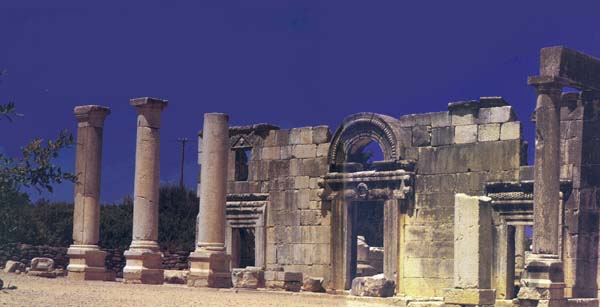Image Details

Photograph by Zev Radovan
The Bar’am Synagogue , in northern Galilee, is the best-preserved ancient synagogue in Israel. Like other ancient synagogues in this region, it was built in the style of the Galilean-type basilica, which parallels Christian church architecture in Syria.
In the centuries following the destruction of Herod’s Temple in Jerusalem in 70 C.E., Jewish religious life was focused on synagogues. Many people have supposed, therefore, that synagogues arose in the wake of the Temple and functioned as its replacement. But as author Steven Fine notes, their history is more complex. Not only did synagogues exist in the mid-first century B.C.E., while the Temple still stood, but within them developed rituals different from the highly formal prayers and sacrifices of the Temple.
Synagogues, from the Greek sunagoge (assembly), were informal meeting places, where the predominant religious activity seems to have been the study of Torah. (In some ancient sources, “synagogue” refers to a community of Jews who met informally, and not exclusively to the building in which they met.) Thus Temple and synagogue had complementary functions; only later, after the Temple’s destruction, did the synagogue come to be, in the words of an ancient rabbi, a “small temple”—though with less holiness than the eternally sacred Temple of Jerusalem.
